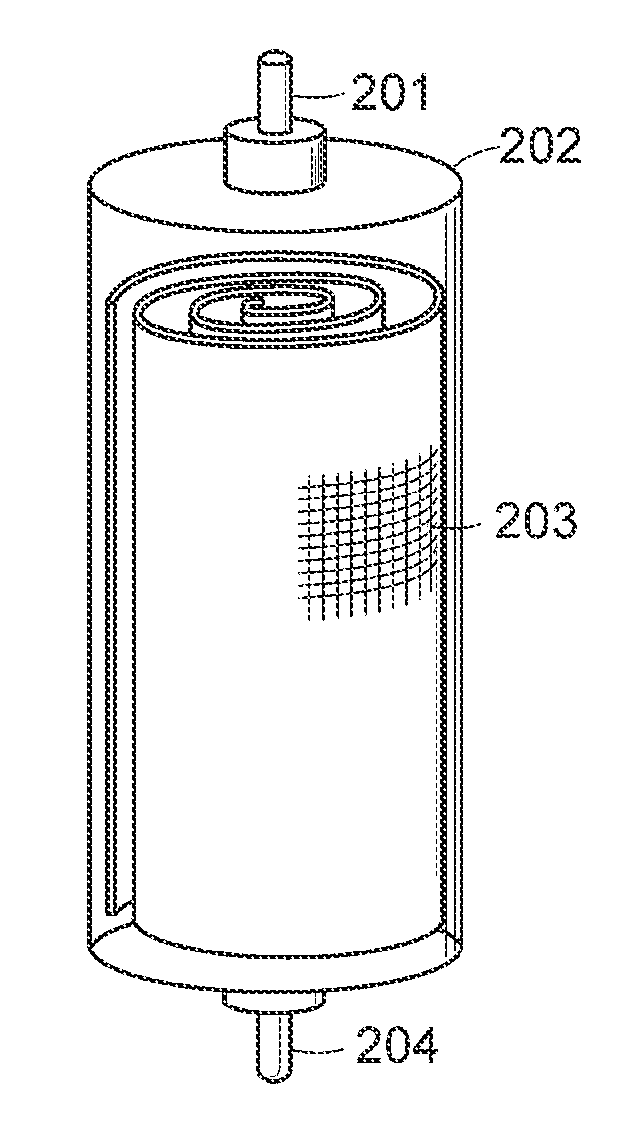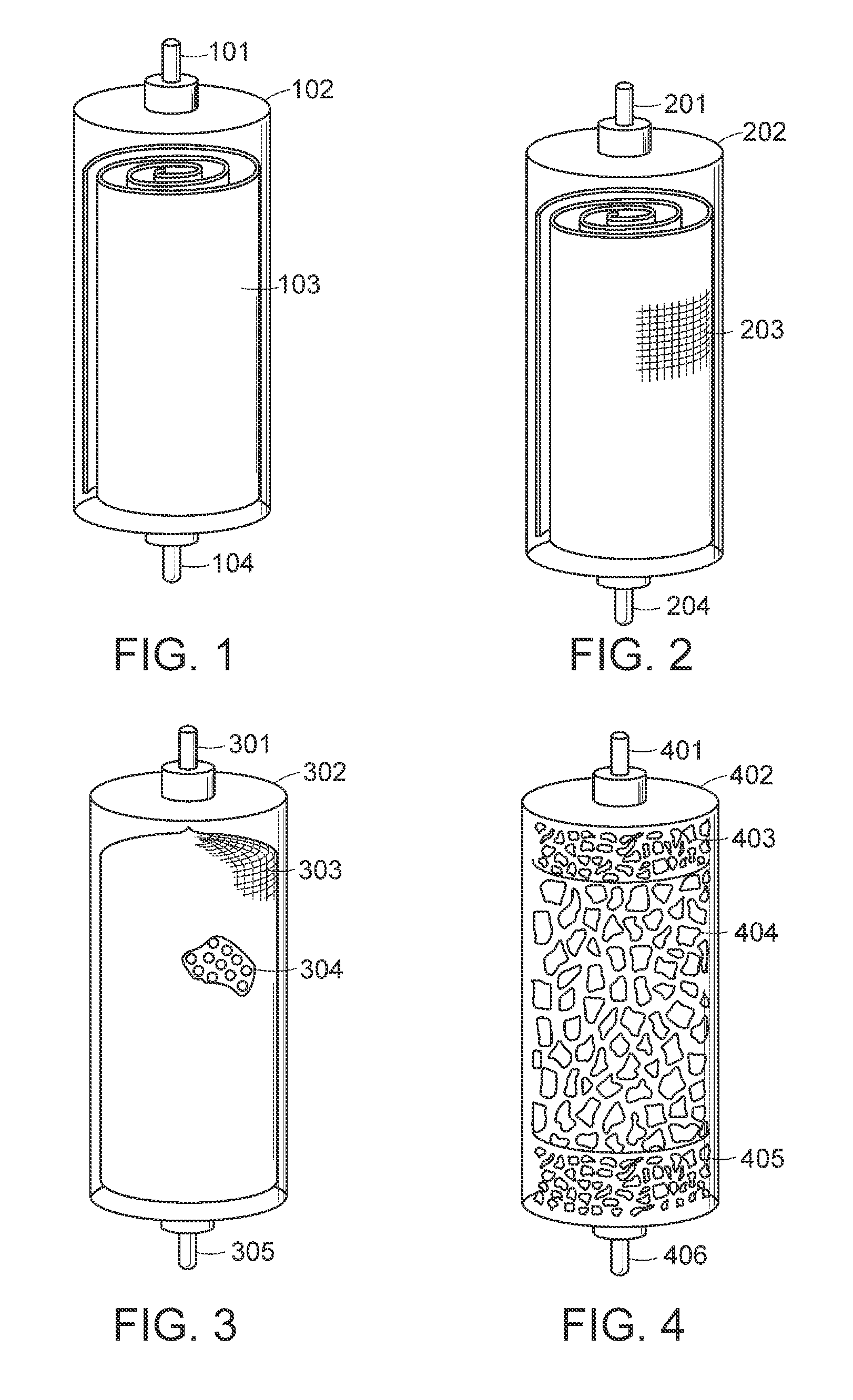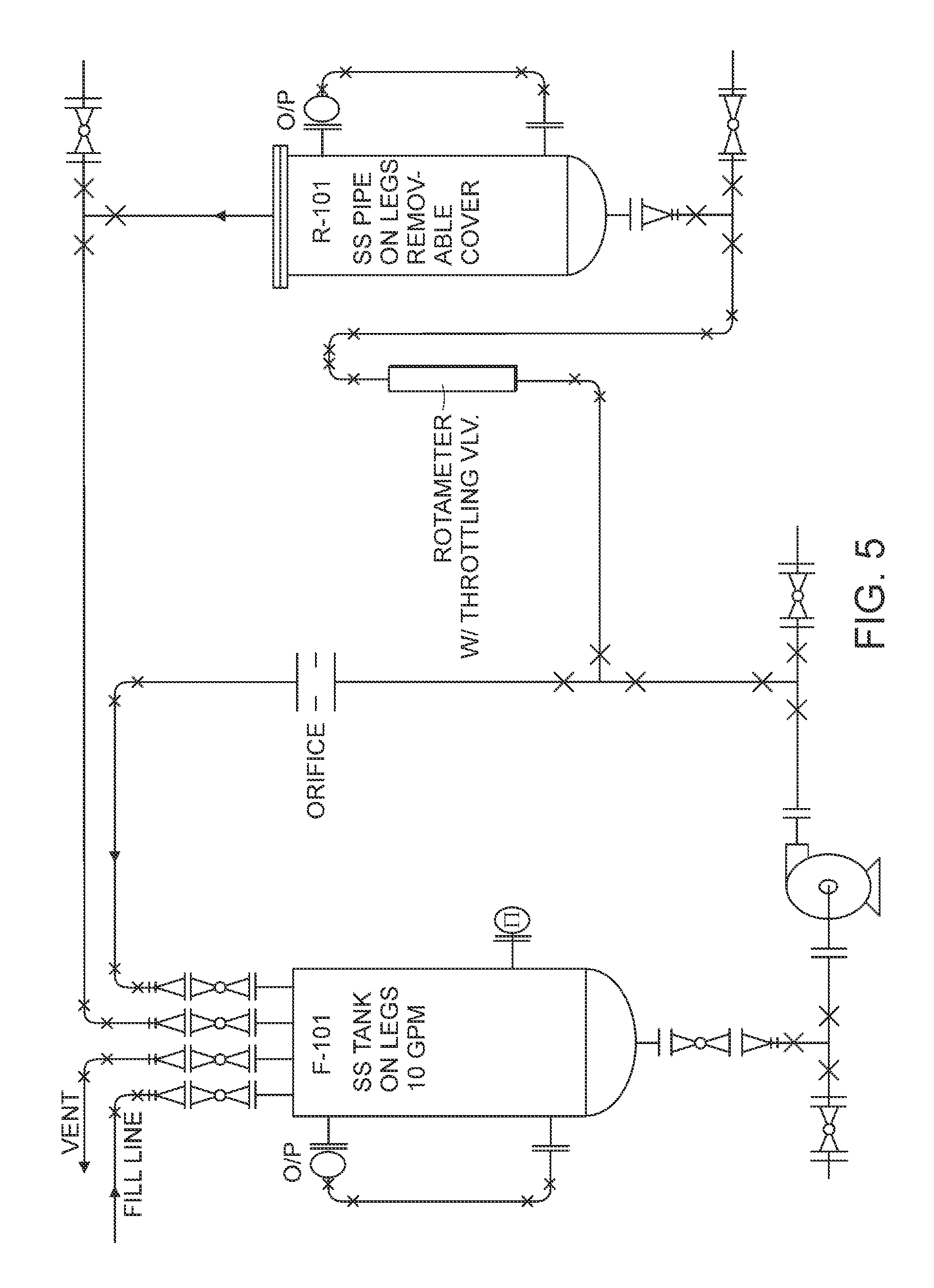Method and apparatus for the treatment of fluid waste streams
a technology of fluid waste and treatment method, applied in the direction of liquid-gas reaction process, machine/engine, chemical/physical process, etc., can solve the problems of neurotoxicity and delayed cholinergic toxicity, high toxic to many organisms, and increased danger to humans
- Summary
- Abstract
- Description
- Claims
- Application Information
AI Technical Summary
Benefits of technology
Problems solved by technology
Method used
Image
Examples
example 1
Preparation of Enzyme Composition Powder (i.e., Powdered Cells expressing the OPd Gene)
[0306] The following example describes a preferred procedure for the preparation of an enzyme composition powder for detoxifying an organophosphorous compound, Paraoxon, using DH5 alpha Escherichia coli expressing a mutant opd gene.
Cell Growth
[0307] Four (4) fernbach flasks with 1 L of Terrific Broth (“TB”) per flask are prepared and autoclaved to sterilization.
[0308] Four (4) culture tubes each are prepared containing 5 ml of LB broth (“LB”) and 5 μl of ampicillin. The culture tubes containing the LB and ampicillin are inoculated with DH5 alpha Escherichia coli cells expressing a mutant opd gene. The inoculated culture tubes tubes are placed in either a roller drum or tube rack to agitate overnight at 37° C.
[0309] 1 ml of CoCl2 and 1 ml of ampicillin is added to each fernbach flask. Each fernbach flask is inoculated with the contants of one (1) of the culture tubes that was agitated overnig...
example 2a
Preparation of a Bioactive Coating
[0321] The following demonstrates a first preferred method for preparing a bioactive coating. Cell powder was prepared by lyophilization as described in Example 1. 10.56 grams of the cell powder so produced was then added to 40 mL of a 60% glycerol solution (60% v / v in distilled, deionized water). The glycerol solution plus cell powder was then added to 400 mL of latex acrylic paint (Sherwin-Williams Acrylic Latex paint, S-W serial # B66 W1 136-1500) and mixed thoroughly. The result is a bioactive latex acrylic coating capable of detoxifying organophosphorus compounds. The bioactive coating has a cell powder concentration of 26.4 g of cell powder per liter of latex acrylic paint coating. The cell powder concentration in this case may also be expressed as 24.0 g of cell powder per liter of total coating composition (i.e., the combined volume of latex acrylic coating and glycerol solution.
example 2b
Preparation of a Bioactive Coating
[0322] The following describes an alternate preferred preparation of a bioactive coating derived from a commercially available latex paint. 3 mg of cell powder was obtained by the volatile organic suspension and milling method (VOC method) described in Example 1. The milled powder was added to 3 ml of 50% glycerol (50% v / v with distilled deionized water). The cell powder and glycerol suspension was then added to 100 ml of Olympic® premium interior flat latex paint (Olympic®, One PPG Place, Pittsburg, Pa. 15272 USA) and mixed thoroughly. The resulting bioactive coating has a cell powder concentration of 0.03 g of cell powder per liter of latex paint coating. The cell powder concentration in this case may also be expressed as 0.029 g of cell powder per liter of total coating composition (i.e., the combined volume of latex coating and glycerol solution.)
PUM
| Property | Measurement | Unit |
|---|---|---|
| Volume | aaaaa | aaaaa |
| Volume | aaaaa | aaaaa |
| Volume | aaaaa | aaaaa |
Abstract
Description
Claims
Application Information
 Login to View More
Login to View More - R&D
- Intellectual Property
- Life Sciences
- Materials
- Tech Scout
- Unparalleled Data Quality
- Higher Quality Content
- 60% Fewer Hallucinations
Browse by: Latest US Patents, China's latest patents, Technical Efficacy Thesaurus, Application Domain, Technology Topic, Popular Technical Reports.
© 2025 PatSnap. All rights reserved.Legal|Privacy policy|Modern Slavery Act Transparency Statement|Sitemap|About US| Contact US: help@patsnap.com



